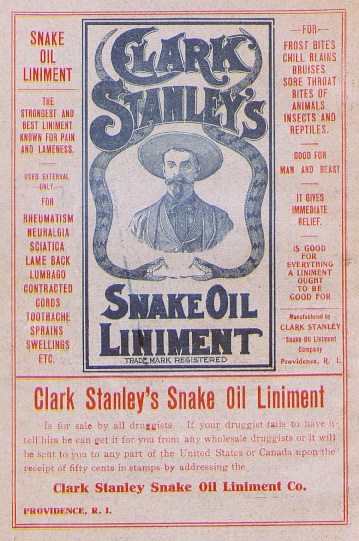 Non-Traditional Soil Additives - December 5, 2012 Jeff Schalau, Agent, Agriculture & Natural Resources University of Arizona Cooperative Extension, Yavapai County Vegetable and fruit gardeners are faced with an ever increasing number of products purported to increase plant vigor and productivity. Pictures, graphs, and testimonials may festoon the package telling of significant yield benefits or soil improvements. The cost for these products is often low and the reputed benefits great, so it is tempting to use these products. Some of these products are legitimate and can improve production. Others are not so good. Gardeners should be very skeptical of these miracle products unless they have been subjected to independent research which has validated their effects. Soil and plant additives may be classified in a number of ways by their manufacturers. For consistency, most soil scientists and agronomists classify these products as soil conditioners or soil activators/biological inoculants. In general, soil additives can be distinguished from fertilizers in that they usually have little or no nutrient content. Unlike fertilizers, additives are commonly not marketed with, nor are they required to provide, a guaranteed analysis (the three numbers indicating their N-P-K percentages). Instead, manufacturers often suggest that adding these materials to the soil enhances production by improving water and/or nutrient availability and uptake by plants. These enhancements are generally said to occur when standard fertilizer applications are made to the crop at recommended or near recommended levels. Some additives claim to replace or significantly reduce the need for fertilizers. Soil conditioners usually are defined as materials that improve a soil’s physical condition or structure and, in turn, the soil’s aeration and water relationships. Certainly, maintaining and/or improving soil structure is highly desirable in crop production. Adding organic matter to the soil is the most common method for improving soil structure. Traditional additives include crop residues, livestock manures and sewage sludge. Non-traditional soil conditioners include both organic and inorganic products. Some non-traditional soil conditioners contain composted organic materials which may also be supplemented with inorganic materials such as unprocessed rock phosphate or ground limestone. Such additives may be marketed as liquid extracts of livestock manure or other organic residues. Others originate from mined mineral deposits that are unprocessed except for grinding. Again, the composition of these materials can be highly variable, but they may include granite, glauconite (sometimes called green sand), gypsum, or sand. Mined humates or humic acids are prehistoric organic deposits in the advanced stages of transformation into coal which are normally discarded during mining. Liquid humates also have been marketed and are, presumably, a concentrate of humic acids. Other products include inorganic solids such as evaporated sea water or sulfates, which may be combined with organic extracts of materials such as kelp (sea weed) or whey. As you can see, the composition of these materials varies greatly. Soil activators are marketed on the basis that they stimulate existing soil microbes or inoculate the soil with new beneficial organisms. Some manufacturers suggest that such products may improve soil physical properties (improve structure, reduce compaction), increase fertilizer and soil nutrient uptake, improve crop yields and/or quality, correct soil “toxicities” (such as salinity), and provide disease and insect resistance. Most soil microbiologists agree that to significantly increase the activity of soil microbes for more than a few hours, a minimum of several hundred pounds of organic material must be added to the soil. However, these products often are applied at rates of only a few pounds per acre, which may add as little as 1 pound of microbes to soil that already contains 2,000 to 4,000 pounds of microbes per acre. Numerous studies have been conducted across the United States to evaluate various soil activators. In general, these studies have shown no significant beneficial effects of these products on crop yields or quality. One exception is where legume seeds are inoculated with and appropriate Rhizobium bacteria strain. Rhizobium inoculation improves legume nodulation and nitrogen fixation: a phenomenon which has been thoroughly investigated and well documented. When evaluating non-traditional soil additives, you may ask the manufacturer for independent research results. Where results are available, scrutinize them for bias – who conducted the research, was the study replicated, were yield increases noted? Where no information is available, you may choose to conduct a small trial making sure to compare the effect of a soil additive/conditioner using the same crop varieties on the same soil. Keep all factors equal except for the addition of the soil additive/conditioner. Always compare the results to an untreated control plot. For more information about soil additives, see the links below the on-line version of this column. Follow the Backyard Gardener on Twitter – use the link on the BYG website. If you have other gardening questions, call the Master Gardener help line in the Camp Verde office at 928-554-8999 Ext. 3 or e-mail us at cottonwoodmg@yahoo.com and be sure to include your name, address and phone number. Find past Backyard Gardener columns or provide feedback at the Backyard Gardener web site: http://cals.arizona.edu/yavapai/anr/hort/byg/. Additional Information Guidelines for Using Non-Traditional Soil Additives, University of Arizona Cooperative Extension Publication AZ 1582, 2012 http://cals.arizona.edu/pubs/crops/az1582.pdf Non-Traditional Soil Additives: Can They Improve Crop Production?, Texas A & M Agricultural Extension Service Publication L-5202, 1998 http://publications.tamu.edu/SOIL_CONSERVATION_NUTRIENTS/PUB_soil_Non-Traditional%20Soil%20Additives.pdf Nonconventional Soil Additives and Programs, Dr. John Sawyer, Department of Agronomy, Iowa State University, 2008 http://www.extension.iastate.edu/CropNews/2008/0916sawyer.htm |